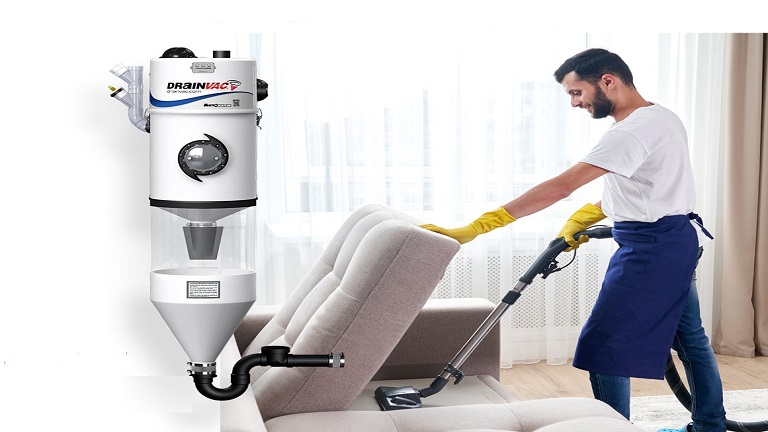
Central vacuum system 101 – usage, functions and all you need to know
If you are considering getting a central vacuum system installed in your new home, or have moved into a house which has a central vacuum system, you may want to know how it works.
This post gives an overview of how a vacuum system works, and how you can use it to help you make the best use of the installation. Many times, when we do not use something, especially when it seems complex, it lies unused and gathers dust.
Whether you’ve moved into a home with a central vacuum system already installed, are considering installing one, or simply want to learn more about how a central vacuum works, this overview should help you better understand it and make the most of this versatile system to keep your home in tip-top shape.
Central vacuum – what you should know:
Know your system:
First, understand the layout of your central vacuum system for the home. It is a semi-permanent fixture, with ports, vacuum inlets or vacuum floorboards located at fixed locations. Know where these locations are.
If you are getting it installed in your home which is under construction, you have the option of getting these inlets, ports and boards installed at concealed or strategic locations – like under the staircase, where debris and dirt can be swept off for drainage, or in the utility cabinet or workplace.
You can have a water drain directly into the garden, or set up separate drainages for organic and inorganic wastes so that organic waste goes into the composting pit.
Understand the workflow
Once you get a hang of the system, it is as easy as 1 2 3. If you know where the inlet ports, are and where the drainage or collection pans are, all you have to do is flick a switch, pull out the hose and start vacuuming.
Some systems have retractable hoses that you can pull out of the ports, and others have common hoses that you need to plug into the port that connects to the central vacuum line.
Also, know the different attachments and accessories that come with your vacuum system. You may need to use brushes or other cleaning tools – different for dust, liquid, oil or caked grime
How do you clean surfaces?
Cleaning Floors or hard surfaces:
Central vacuum systems work best on large areas with few obstacles. Hardwood, tiles, cemented floors or stone can be cleaned in a jiffy of dirt, dust, pet and human hair. If you have a tiled floor, the grooves that catch grime can be brushed off by using the suction hose with a gentle brush attachment. A few systems can clean and mop the floor at the same time.
Carpet cleaning:
Attachments like a beater brush can be used for carpeted floors or dhurries. These are attachments with revolving brushes, similar to the ones you see on road cleaners.
These function with hard bristles that revolve, which separate the thicker fibres of plush carpets, and the suction picks up the dust, and debris that settles into the carpet.
In case of spills and stains, the vacuum head also helps with a scrubbing action, so that soap and water is picked up into drainage.
A good hack is to saturate the carpet with baking soda so that any unpleasant odours and moisture are absorbed by the baking soda. Once it soaks up all the unwanted grime, dust and liquid spill, it can easily be vacuumed.
Similarly, another attachment called the air-driven beater brush works in the opposite way. It does not pick up, but drives air out, acting like a blow dryer. You can use this like an electrical power brush.
Upholstery cleaning:
Upholstery can be tricky to clean. Unlike linen, they are less frequently changed and gather dust, fungi and pollen, especially in areas up high. Start cleaning the highest points like draperies or curtains. You can then clean sofas, mattresses and other upholstery. Use a dusting brush attachment at the end of the hose wand. Heard-to-reach places can be cleaned easily with other attachments like crevice brushes or special wands
Proper Storage of attachments and Accessories
A lot of damage to the equipment results from improper storage and carelessness. Do not leave hoses on the floor or bundled in the garage. Invest in a wire hose hanger. If you have a retractable hose make sure the retraction action works fine. If you use a detachable hose, unplug both ends, loop it up neatly and hang it on a wire hanger.
If you operate an industrial central vacuum system that requires a wide range of accessories and attachments get a caddy or hang board like the one you use for tools. They will have lesser wear and tear and last longer.
To conclude..
Most times, we refrain from using a large appliance since we are unaware of all its features or functionalities. Knowing how they can help us make our lives comfortable and convenient, and trying it once will acquaint us with the procedure. Further taking care of the equipment through small steps, and basic things goes a long way in improving equipment longevity.


